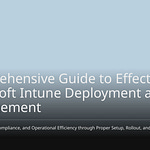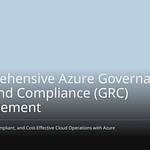It’s often challenging to convince leaders to invest in governance. Many executives view governance as a mere expense rather than a beneficial asset. However, governance strategically supports a business, yielding numerous advantages. This document outlines a clear approach to building a compelling case for your leadership. You’ll discover how to persuade your boss and secure their agreement. Demonstrate how it mitigates risks, enhances operational efficiency, and provides a competitive edge. Securing leadership buy-in to invest in governance is crucial for sustainable growth.
Key Takeaways
Understand what leaders care about, like money and goals. Then, show how governance helps these things.
Show how governance keeps the company safe from problems and saves money. Use numbers to prove this.
Explain how governance makes work better and helps the company grow with new ideas.
Be ready to answer questions about costs and rules. Show a clear plan for how governance will work.
Understand Leadership’s Perspective
To get leaders to agree, you must know their views. Match your plan to their main goals. Deal with their worries directly. This helps you make a strong argument.
Identify Business Objectives
First, find what truly moves your leaders. Leaders care about clear goals. They want a good work culture. They aim to attract good staff. They ensure good communication. They push for new ideas. Governance helps these key goals. For example, it makes data good and steady. This is key for good analysis. It helps leaders make smart choices. Governance also follows rules. This stops fines and bad fame. It makes data easy to use. This helps teams decide with trust. Link governance to these main goals. This shows its key value. This also helps train leaders. This is a big part of leader growth.
Recognize Leadership Concerns
Leaders also worry about new spending. They fear too many projects. They worry about risks. They worry about clear goals. They worry about real gains. They also fear being stuck. This happens in unsure times. Show how governance manages risks. It finds new and old risks. It sets up ways to control them. This helps get leaders to agree. It calms their fears. Governance lowers chances of data leaks. It lowers money penalties. It lowers bad fame. It makes sure new projects are strong. They are built on a safe base. This lowers overall risk for the company.
Speak Their Language
To truly persuade your boss, use their words. Focus on numbers and KPIs. These matter most to them. Leaders watch customer costs. They watch lead success rates. They watch average deal size. They watch profits by product. Show how governance boosts these numbers. For example, good data helps grow sales. It finds new chances. It makes marketing better. It also makes work more efficient. This cuts costs. Investing in leaders helps. Strong governance training helps. It makes company decisions better. This gets leaders to agree. It helps leaders grow. It ensures leaders can handle complex data.
Articulate Governance Value
You must show how governance helps your business. It is not just a cost. It helps your business succeed. Governance helps you reach your goals. It helps you stay ahead.
Mitigate Risks
Governance keeps your company safe. It helps you build strong plans. You can make choices faster. You can be more flexible. This makes governance a good advantage. It is more than just fixing problems. Governance makes sure everyone agrees. This includes money goals. It includes company goals. It protects your good name. It gives a clear way to watch over things. It helps groups with clear jobs. They can make smart choices. This is true even in hard times. Governance stops work from being done twice. It closes gaps in watching over things. It makes work easier. It does this with a strong plan. It also uses clear roles for choices. You get quick, full information. This helps you make smarter choices. It helps you find good chances. It helps you see weak spots. Always trying to do better helps you change. It helps you find new chances. This helps your company do well for a long time. You can handle hard things. You can manage risks well.
Think about money problems from risks. Up to 80% of digital info is old or useless. This is from a survey by AIIM. IDC says 90% of all digital info is not organized. Workers spend 36% of their day looking for info. 44% of the time, they cannot find it. This wasted time costs money. It costs $5,700 per worker each year. This is based on an $80,000 salary. It uses a 41.8-hour workweek. A company with 1,000 workers can waste over $5.7 million. This happens each year. They spend time searching. But they do not find info. Many pages are found for lawsuits. The RAND Corporation says 73% of e-discovery costs are for checking info. A court case showed this. The court said digital info is common. It is a cost of business. How you keep data matters. It affects lawsuit risks. It affects what you must show. The court made a company give emails. It said you cannot avoid showing papers. This is true even if you chose a costly way. Good data governance helps you avoid these problems.
Drive Cost Savings
Good governance saves you money. You can make work easier. You can make things run better. Find problems in your work steps. Get rid of extra steps. Make machines work better. Fix problems. Reduce setup times. Plan for upkeep. Make workers more useful. See how much time they spend on key tasks. Stop wasted work. Make plans better. Use real facts and needs. This saves money on extra items. Manage your supply chain well. Make buying, planning, storing, and sending better. Use smart methods.
Enterprise Architecture (EA) shows you all your IT. This helps you find problems. It finds extra systems. It finds ways to make things better. This saves a lot of money. EA helps you pick IT projects. It matches tech plans with business goals. This makes sure money goes to the best projects. It also lowers costs for old systems. It finds old systems. It helps make them new. It helps move to cheaper, better tech. EA helps with cloud move costs. It gives a clear way to check systems. It helps plan moves. It makes sure cloud is used well. This stops extra costs. EA saves money for a long time. It makes things run well. It lowers risks of bad tech choices. You save money always. This is from better systems. Your leaders will like these savings.
Here are ways governance saves money:
Boost Efficiency and Productivity
Process governance makes work smoother. It removes roadblocks. This makes work faster. Teams work better. Full process governance makes work stronger. It follows best ways. It changes based on feedback. This makes work better.
Governance makes sure work follows laws. This is true in strict fields. It keeps records. It says who is in charge of rules. It helps change for new rules. This lowers risks. For company changes, governance sets a clear plan. It makes work the same for all parts. It says who decides. It plans for changes. This helps things join well. For digital changes, governance makes sure tech is first. Work changes for digital tools. Changes show good results. It handles risks like cyber threats. It handles data. For better customer work, governance helps design. It helps do and improve work. This is for things like sign-ups, help, and bills. It makes sure things are the same. It lowers mistakes. It makes customers happy. For remote work, governance gives a plan. It gives clarity. It gives accountability. It gives performance. This is for teams far apart. It makes work standard. It helps talk. It adds flexibility. To get leaders to agree, show how this helps money.
Enable Innovation and Growth
Good product governance helps make new products. It helps go into new markets. This plan, especially ‘Organisational Mastery,’ links strategy. It links speed. It links constant improvement. It links sharing knowledge. It makes sure product making has a purpose. It is efficient. It matches business goals. It turns strategy into daily work. Every product choice comes from company goals. This stops bad projects. It uses resources well. It focuses on getting products out fast. This is through quick, good work. This makes sure products meet market needs. Constant improvement and new ideas are helped by clear rules. This makes products good and current. Sharing knowledge spreads good ideas. This makes products better. A culture of new ideas makes products grow. They grow with market needs. This stops things from getting old.
Think about bad versus good governance for new ideas:
The U.S. Department of Defense shows how governance speeds up new ideas. They use special agreements. These avoid old buying rules. This lets them use good prototypes fast. They do this without more bidding. This makes buying much faster. It helps use new tech more. Using AI tools can speed up new ideas. It links problem solvers with ideas. This helps smart idea systems. It makes ideas happen faster. Good data is key for these new ideas.
Ensure Compliance
Not following rules costs a lot. It also hurts your name. In 2022, banks paid over $5 billion. This was for breaking money rules. Companies not following rules pay 2.7 times more. This is for fixing problems. This is from LexisNexis, 2023. You also have hidden costs. These include more audit costs. They include legal fees. They include work problems. They include losing customers. Damage to your name is big. A report says 25% of a company’s value is its name. You might lose customer trust. You might have bad investor ties. You might lose partners.
Look at real examples:
Wirecard fell apart. This was due to fake books and bad rules.
Capital One (2020) paid an $80 million fine. This was for bad risk and data safety.
Binance (2023) paid over $4 billion. This was for not having good money controls.
Not following rules can stop your work. Businesses might not be able to do deals. They might not work in some places. Heartland Payment Systems was banned for 14 months. This was after a data breach in 2008. Public news of rule-breaking hurts trust. Sephora paid $1.2 million in 2022. This was for breaking data rules. This led to bad press. It lost customer trust. Companies can lose government work. Health Net Federal Services paid $11.2 million. This was for cyber fraud claims. It lost a big contract. Businesses might not work with rule-breakers. Refyne lost deals. This was before it showed good security. Fines can be huge. They can be billions for big banks. They come with legal fees. In 2023, fines were over $6.6 billion. This was for money rules. This was a 57% jump from 2022. Not following rules can stop licenses. Bosses can face charges. This happened in India for banks. Bad news, lost customers, and lost investor trust happen. A company’s name is about 30% of its value. This is from a report. Rule checks waste money. They affect daily work. Not following rules can delay products. It leads to fixing problems, not planning. It causes internal issues. Lawsuits often follow rule breaks. They cost banks a lot. Showing a strong case for governance helps avoid these bad outcomes.
Build a Data-Driven Case for Investment
You need to show the impact. You need to show the value. This helps leaders agree. Show current problems with numbers. Guess how much money governance will save. Share success stories from others. Include good words from leaders.
Quantify Current Problems
Show leaders the cost of doing nothing. Use numbers to show problems. This includes bad data costs. It includes wasted time. It includes not following rules. For example, check missing numbers. Many missing numbers mean bad data. It means system problems. These hurt analysis. Check how many errors are in numbers. This finds mistakes. You can also check data update delays. This is key for fresh data. It makes sure data is new. Reduce delays from old ways.
Count repeated records. These are same data entries. They come from errors. They come from system bugs. Use math tools. Use data range. Use average. Use middle number. Use spread. These show data quality. They show bad values. They show missing points. Watch data pipeline problems. This tracks failures. It tracks lost data. It shows weak spots. “Table health” shows how good a table is. It covers missing values. It covers data range. It covers record match. “Table freshness” checks how new data is. It makes sure info is current. This is key for quick choices.
You can also track custom monitors. Data teams build these. They are for special rules. They check data quality. They add to normal checks. Measure data spread. Find unused tables. Find unused dashboards. These do not help business. They show hidden problems. These hurt data quality. They hurt how well things run. Track slow queries. These queries run slower. They warn of problems. These problems cause failures. They cause data issues.
Think about data to error ratio. This compares known issues. It compares total data size. A lower ratio means better data. Measure empty or wrong values. This shows blank entries. It shows bad formats. It shows how complete data is. It shows if data is right. Track analysis failure rates. Many failures mean bad data. They mean format problems. They mean not complete. Watch data change error rates. Failures mean bad source data. They mean strange formats. They mean errors. Measure data time-to-value. This shows hidden costs. These costs come from bad data. Check data processing amount. This shows how fast systems work. It shows how they handle big data. Better speed means smooth work. Slow speed means bad data. Compare storage costs. Compare active data use. A difference shows waste. It shows old or useless data.
Human error causes 75% of data loss. For typed entries, errors can be 4%. This means 40 errors per 1000 entries. This hurts your money. Muskoka Brewery shows this. Before machines, their team spent three hours daily. They fixed orders. This was 15 hours a week. After machines, it takes 20 minutes. This saves 14.67 hours weekly. It saves over 694 hours yearly. Manual errors became zero. This cut costs like refunds. You can compare bad orders to good ones. This shows hidden time. It shows cost gaps. It shows where manual errors add work. It shows shipping overruns. Measure specific things. Measure processing time. Measure labor cost. Measure fix cost. Measure error rate.
Project ROI and Benefits
After finding problems, show the ROI. Show the benefits. This is key for leaders to agree. ROI formula is simple. Subtract costs from income. This gives profit. Divide profit by costs. ROI = (Net Profit / Cost) x 100. For projects: ROI = [(Value - Cost) / Cost] x 100.
To find data governance ROI, set clear starting points. This helps compare things. Match numbers to business goals. This makes them important to leaders. Use both numbers and descriptions. This shows full value. Start measuring slowly. Do not track everything at once. Do not just focus on saving money. Showing new value is better. Do not make measuring too hard. Too much detail hides main points.
A full plan for data governance ROI has parts. Data quality numbers include accuracy. They include completeness. They include consistency. They include error fix times. They show less future problems. Rules and privacy numbers are for certain fields. These include audit scores. They include privacy rules. They include data history. They track rule break events. Work speed numbers show daily gains. These include data finding time. They include self-service use. They include hours saved. They include less repeated data. Data governance tech usually pays back fast. It takes about 10.3 months. This quick payback helps your case.
Use Case Studies and Benchmarks
To make your case stronger, use examples. Use comparisons. Share success stories from other groups. Include good words from leaders. This shows leaders others did it. The Digital Maturity Benchmark Framework has “Governance Rhythm.” This shows maturity by speed. It checks how rules change. It makes things clear. It balances rules. Governance is mature when rules move fast.
Look at industry comparisons for governance:
These plans show how to grow. They show how governance changes fields. In money, governance is the standard. Rules become trust. Maturity means quick rules. Watching protects new ideas. In health, standards check sharing. They check privacy. They check ethics. They focus on care. Factory standards check data use. They check how data becomes plans. Speed becomes knowing. In energy, standards check data mix. They check money and work numbers. Governance grows from rules to care. Store standards check speed. They check matching when customers change. Maturity is steady, not still. In public work, trust is the standard. It checks how digital helps rules. It helps access. It matches goals. It matches steps. It matches clarity. These examples strongly support your case.
Propose a Phased Approach
A phased plan makes your request easier. It shows good planning. A good case for data governance needs parts. Clearly state problems. These include data silos. These include rule risks. Also, state chances. These need data governance. Show planned actions. Show strategies. This includes standard ways. It includes data teams. It includes setting rules. Detail needed investments. This includes money. It includes staff time. It includes tech. It includes training. Describe expected value. This includes money saved. It includes better rules. It includes happy users. It includes new ideas. A strong case looks at both costs. It looks at both benefits. This shows full value.
Make your case for your audience. It must speak to workers. It must speak to leaders. They control money. Remove hard words. Use words they know. Explain new words. Be short. Use fewer, exact words. This shows you know. Be clear. Show roles. Show duties. Show times. This shows good planning. Link your plan to a main goal. Stress its importance. Connect it to bigger company goals. Clearly state the problem. This is what your plan fixes. Give a short, full problem description. Link it to reasons. Link it to chances. Show the value your plan brings. Find risks of not doing it. If possible, use numbers. Talk about tech needs. This helps new investments. Say when you want results. This helps set priorities. Check if current staff can do it. This includes change help. It includes new skills. Define success. This includes how to measure. This is your ROI.
Your case should show results. It should show the timeline. It must show how to measure. Examples include clear data words. You will see more data trust. You will have better data quality. You will have clear data history. You will see more data use. This brings more ROI. Checked data will help choices. You will have quick proof of rules. This plan helps leaders agree. It helps data-driven choices.
Address Objections to Governance Investment
Be ready for common worries. Show long-term value. This gets leaders to agree.
Counter Cost Concerns
Leaders worry about new costs. Show them governance is an investment. It is not just an expense. There are short-term costs. But long-term money benefits are big. A stronger money system results. Banking crises are less likely. Strong banks handle problems better. These benefits make the first investment worth it. Initial costs are small. They are short-lived. Benefits of a stable system last.
Address Bureaucracy Fears
You might fear too much red tape. But governance can be quick. Encourage open talks. Workers can share ideas freely. Give time and money for new ideas. Have teams work together. Praise new efforts. Allow smart risks and tests. This makes people feel safe. It removes extra rules. This helps leaders agree to data governance.
Highlight Existing Gaps
Show leaders current problems. Find missing governance parts. Check each control area. Look at now and what you want. This finds differences. Make a plan to close gaps. Give jobs and set times. Focus on important and urgent tasks. This shows why data governance is needed. It makes your case stronger.
Plan for Resource Allocation
Show how you will use resources well. Make a clear plan for resources. This means money, staff time, and tech. Show how data governance will be done well. This tells leaders their money will be used wisely. It helps get leaders to agree. This makes your case stronger.
Make a Plan to Start
You need a clear plan. It shows how your governance will work. This plan shows how to do things. It shows how to check results. It builds trust. It makes sure your data governance works.
Set What to Do and Why
First, say what your data governance will do. Find what hurts now. Make leaders want to change. Say what you want to see. Say what you want to do. Say your goals. This could be better data. It could be following rules. It could be using AI. Look at how things are now. Find what is missing. This helps set real goals. Your leaders will like a clear plan.
Find Key People
Good data governance needs everyone. Find all key people. Get them involved. This means top bosses. It means business heads. It means tech teams. It means governance helpers. Getting bosses to agree is key. A strong group can help everyone work together. Your leader training should teach these people.
Show What You Will Do and How to Check
Say what your data governance will make. Write down rules. Write down steps. Write down jobs. Write down who does what. Make a strong data governance plan. Make rules. Give people data jobs. Add data info. Add data quality rules. Set up ways to watch. Set up ways to report. Set up ways to check. Say how you will track how well you do. Make charts to show progress. Show how data quality gets better. Pick numbers to watch. Check them often to keep getting better.
Plan How to Talk and Report
You must plan how to share progress. You must plan how to report results. Train all teams often. Teach specific roles. Teach data helpers. Teach data owners. Teach data analysts. Make your data governance plan always get better. This means it is always working. It is not just one project. Talking often makes things clear. It keeps bosses on board. Good leader training helps this. It makes people care about data quality. It makes them responsible.
Convincing your boss needs a plan. It needs research. It needs good talking. Governance helps your business. It is not just a cost. It lowers risks. It makes things work better. It gives you an edge. Use these steps. Build your case. Leaders need training. They must back governance. This training helps leaders. It helps your company.
FAQ
What is governance?
Governance sets clear rules. It sets clear ways to do things. It says who does what. It guides your company’s actions. It helps reach goals. It helps manage risks. It uses resources well. It is like your company’s brain.
Why is governance an investment?
Governance keeps your things safe. It makes work better. You make fewer mistakes. You avoid fines. It helps new ideas. You get an advantage. These good things are worth the cost. You make your future safe.
How fast will I see results?
You can see changes fast. Better data quality shows up quickly. Big returns often come in 6 to 12 months. Good things like growth last longer. You will get lasting value.
Does my small business need governance?
Yes, it does! Governance works for any size. Small businesses need clear ways to work. You lower risks. You make better choices. You build a strong base for growth. It stops future problems. You keep your important things safe.












